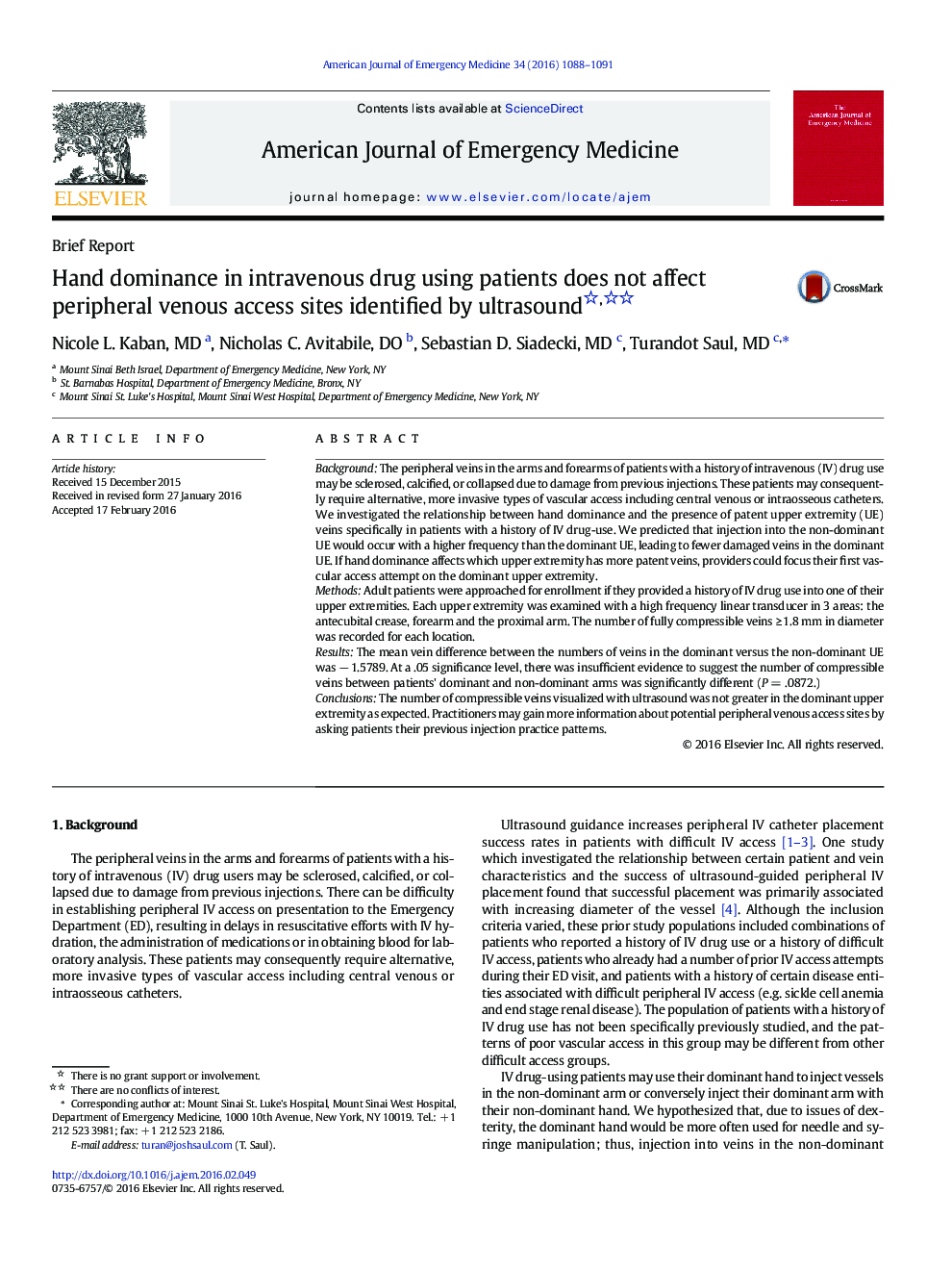| Article ID | Journal | Published Year | Pages | File Type |
|---|---|---|---|---|
| 3223130 | The American Journal of Emergency Medicine | 2016 | 4 Pages |
BackgroundThe peripheral veins in the arms and forearms of patients with a history of intravenous (IV) drug use may be sclerosed, calcified, or collapsed due to damage from previous injections. These patients may consequently require alternative, more invasive types of vascular access including central venous or intraosseous catheters.We investigated the relationship between hand dominance and the presence of patent upper extremity (UE) veins specifically in patients with a history of IV drug-use. We predicted that injection into the non-dominant UE would occur with a higher frequency than the dominant UE, leading to fewer damaged veins in the dominant UE. If hand dominance affects which upper extremity has more patent veins, providers could focus their first vascular access attempt on the dominant upper extremity.MethodsAdult patients were approached for enrollment if they provided a history of IV drug use into one of their upper extremities. Each upper extremity was examined with a high frequency linear transducer in 3 areas: the antecubital crease, forearm and the proximal arm. The number of fully compressible veins ≥ 1.8 mm in diameter was recorded for each location.ResultsThe mean vein difference between the numbers of veins in the dominant versus the non-dominant UE was − 1.5789. At a .05 significance level, there was insufficient evidence to suggest the number of compressible veins between patients' dominant and non-dominant arms was significantly different (P = .0872.)ConclusionsThe number of compressible veins visualized with ultrasound was not greater in the dominant upper extremity as expected. Practitioners may gain more information about potential peripheral venous access sites by asking patients their previous injection practice patterns.
